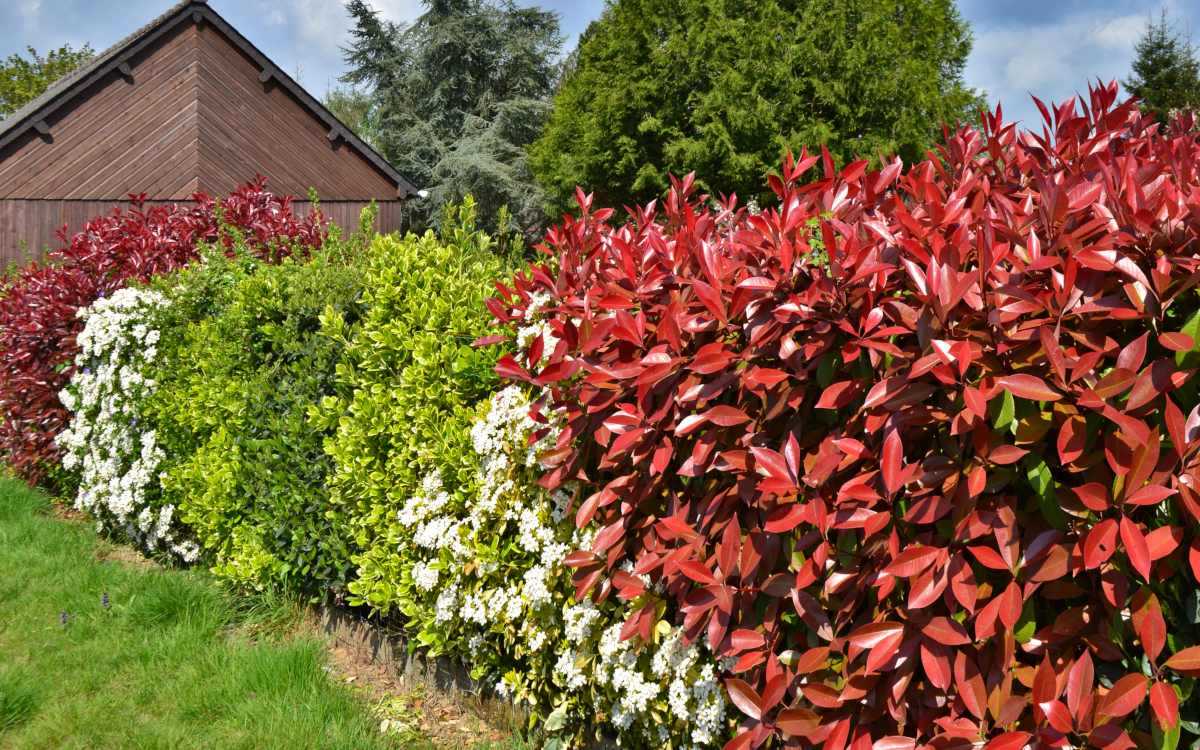- Spring Pruning Guide for Beginners
- 1. Remove Dead and Diseased Branches
- 2. Thin Out Overlapping Branches
- 3. Prune for Shape and Structure
- 4. Control Height and Size
- Importance of Spring Pruning
- Understanding Crown Formation
- Crown Formation Task 1: Removing Deadwood
- Crown Formation Task 2: Thinning the Canopy
- Crown Formation Task 3: Controlling Suckers
- Crown Formation Task 4: Pruning Water Sprouts
- Timing and Tools for Spring Pruning
- Timing for Spring Pruning
- Tools for Spring Pruning
- Tips for Abundant Fruit Yield
- 1. Remove Dead and Diseased Wood
- 2. Thin Out Overcrowded Branches
- 3. Shape the Crown
- 4. Prune for Size Control
- Question-answer:
- When is the best time to prune fruit trees in the spring?
- What are the benefits of spring pruning?
- How should I shape the crown of my fruit trees?
- What tools do I need for spring pruning?
- What is the purpose of thinning out branches during spring pruning?
- Should I prune all fruit trees in the same way?
- Can I prune fruit trees during any time of the year?
- Video: Heavy Pruning Young Fruit Trees | How to Prune Stone Fruit

Spring is the perfect time to prune your fruit trees and ensure a bountiful harvest later in the year. Pruning helps shape the tree, encourage new growth, and allows for better air circulation and light penetration, all of which contribute to healthier trees and more abundant fruit production. If you’re new to pruning, don’t worry – with a little knowledge and the right tools, you’ll be able to tackle the task with confidence.
The first task in spring pruning is to remove any dead or damaged wood. This includes branches that were affected by winter weather or disease. By removing these branches, you reduce the risk of infection spreading and give the tree a fresh start for the growing season. It’s important to make clean cuts at the base of the branch, just outside the branch collar, using sharp pruning shears or a pruning saw.
Next, it’s time to thin out the tree by removing any crossing or rubbing branches. These branches can create wounds and lead to disease. Select the stronger of the two branches and carefully remove the weaker one, making sure not to damage the bark of the remaining branch. Thinning out the canopy will also improve air circulation and light penetration, allowing for better fruit development.
Another important task is to remove any suckers or water sprouts that may have grown from the base of the tree or along the trunk. These shoots are usually vigorous but unproductive, and they can take energy away from the main tree, impacting fruit production. Use pruning shears or bypass loppers to remove them as close to the base as possible.
Finally, you’ll want to shape the tree’s crown by cutting back any excessively long branches, especially those that may be shading other parts of the tree. This will help ensure that all parts of the tree receive sufficient sunlight and promote even fruit ripening. Trim the branches back to a bud or lateral branch, making a slanted cut away from the bud to encourage outward growth.
Remember, pruning is an ongoing process, and regularly maintaining your fruit trees will lead to healthier growth and greater fruit yield year after year. Take your time, follow these crown formation tasks, and before you know it, you’ll be enjoying the fruits of your labor.
So, get your pruning tools ready and take advantage of the spring season to give your fruit trees the care they need for a successful harvest!
Spring Pruning Guide for Beginners
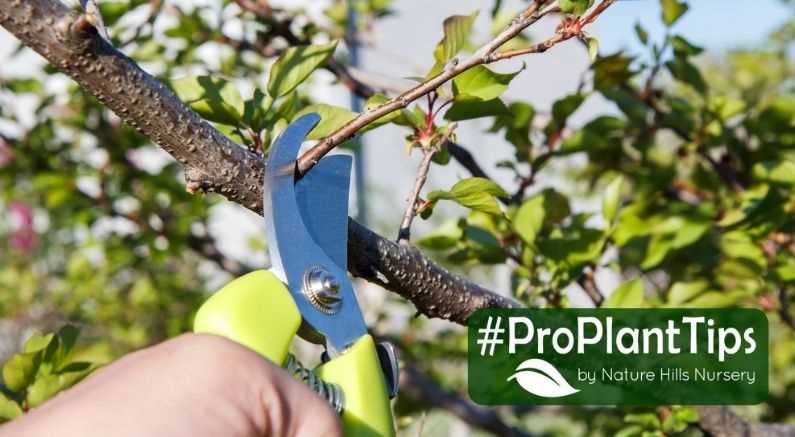

Pruning is an important task in maintaining the health and productivity of fruit trees. By removing certain branches, you can improve air circulation, allow more sunlight to reach the fruit, and promote better fruit development. If you’re new to pruning, here are four crown formation tasks to help you get started in the spring.
1. Remove Dead and Diseased Branches
Begin by inspecting the tree for any dead or diseased branches. These branches can harbor pests and diseases, so removing them is essential for the overall health of the tree. Use sharp pruning shears to make clean cuts at the base of the branch, just above the branch collar.
2. Thin Out Overlapping Branches
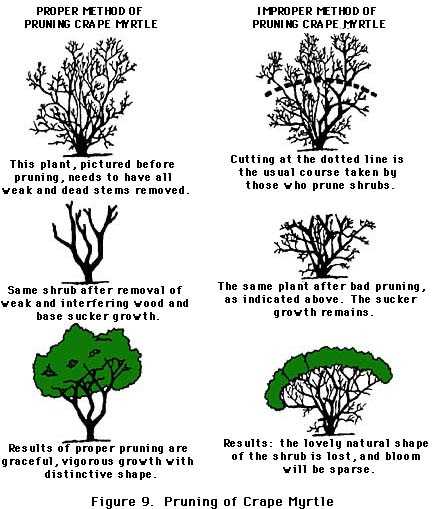

Next, identify any branches that are crossing or rubbing against each other. These branches can damage each other and create opportunities for pests and diseases to enter. Carefully remove one of the overlapping branches, cutting it back to the branch collar. This will help promote better air circulation and prevent future problems.
3. Prune for Shape and Structure
Take a step back and evaluate the overall shape and structure of the tree. Look for any branches that are growing inwards or towards the center of the crown. These branches may not receive sufficient sunlight and can hinder fruit development. Trim these branches back to a strong outward-facing bud to improve the tree’s overall form and encourage better fruit yield.
4. Control Height and Size
If your fruit tree has grown too tall or wide, you may need to reduce its overall height and size. Identify the tallest branches and prune them back to a lateral branch or bud. This will help maintain the tree’s shape and make it easier for you to reach and harvest the fruit. Be careful not to remove too much foliage, as it can affect fruit production.
Remember, when pruning fruit trees, it’s important to use sharp and clean tools to avoid damaging the tree and potentially spreading diseases. Take your time and prune gradually, as over-pruning can stress the tree and impact its ability to produce fruit. By following these basic crown formation tasks, you’ll be well on your way to a bountiful fruit yield.
Importance of Spring Pruning
Spring pruning is an essential practice for maintaining the health and productivity of fruit trees. By strategically removing certain parts of the tree during the dormant season, gardeners can shape the tree, encourage proper growth, and promote abundant fruit yield. Here are some key reasons why spring pruning is important:
- Stimulates Growth: When branches are pruned, it stimulates the growth of new shoots and branches. This helps to renew the tree’s vigor and encourage the production of healthier, stronger fruit-bearing wood.
- Controls Size: Regular pruning helps to control the size of the tree, preventing it from becoming too unruly and difficult to manage. By selectively removing branches, gardeners can maintain the desired height and spread of the tree, which makes it easier to harvest and care for the fruit.
- Improves Air Circulation and Sunlight Penetration: Pruning opens up the canopy of the tree, allowing better air circulation and sunlight penetration. This helps to reduce the risk of disease by promoting drying and discouraging the growth of fungal pathogens. Increased sunlight also improves the color, flavor, and quality of the fruit.
- Enhances Fruit Production: By removing dead, damaged, or diseased wood, as well as pruning excessive branches, the tree’s energy is focused on producing high-quality fruit. Pruning also helps to thin out the tree, which allows the remaining fruits to receive more nutrients and sunlight, resulting in larger, juicier, and more abundant harvests.
It is important to note that while spring pruning is beneficial, it should be done with care and consideration. Improper pruning can weaken the tree, reduce fruit production, and make it more susceptible to pests and diseases. It is recommended to follow proper pruning techniques and consult with a knowledgeable gardener or arborist if you are unsure about how to prune your fruit trees.
Understanding Crown Formation
Crown formation is a critical aspect of pruning fruit trees in the spring. It involves shaping the tree’s canopy to optimize sunlight exposure and airflow, which are essential for healthy fruit development and disease prevention.
There are four key tasks involved in crown formation:
- Pruning out dead or damaged branches: Removing any dead or damaged branches helps to maintain tree health and prevent the spread of diseases.
- Thinning branches: Thinning out crowded branches allows more sunlight to reach the center of the tree and encourages proper fruit development.
- Removing water sprouts and suckers: Water sprouts and suckers are vigorous shoots that grow straight up or from the tree’s base. Removing them helps redirect the tree’s energy towards fruit production.
- Establishing the central leader: Training the tree to have a central leader, or main trunk, helps maintain its structural integrity and prevents it from developing weak crotches that may break under the weight of fruit.
When performing crown formation, it’s important to use sharp and clean tools to make precise cuts. Pruning cuts should be made just above the node or bud, angling away from the bud to promote outward growth.
Proper crown formation during spring pruning sets the foundation for a healthy and productive fruit tree. By optimizing sunlight exposure, airflow, and structural integrity, you can ensure abundant fruit yield and reduce the risk of tree diseases.
Crown Formation Task 1: Removing Deadwood
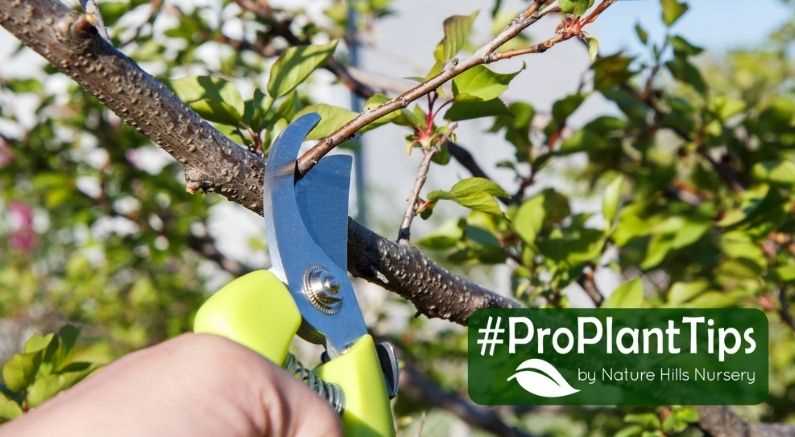

Removing deadwood is an important task in crown formation for abundant fruit yield. Deadwood refers to branches or parts of the tree that are dead or dying. These branches can hinder the tree’s growth and fruit production, so it is necessary to remove them.
Here are the steps to remove deadwood:
- Inspect the tree: Carefully examine the tree and identify any branches that are clearly dead or dying. Deadwood is usually brittle and may have a different color than the healthy branches.
- Prepare the tools: Get a pair of sharp bypass pruners or pruning saw, depending on the size of the branches that need to be removed. Make sure the blades are clean and sharp to make clean cuts and minimize damage to the tree.
- Start pruning: Begin at the base of the tree and work your way up. Look for dead branches that are crossing or rubbing against healthy branches, as they can cause wounds and make the tree vulnerable to diseases. Use your tools to remove the dead branches by making clean cuts just above the branch collar, the swollen area where the branch meets the trunk.
- Dispose of the deadwood: Collect all the removed dead branches and dispose of them properly. You can either use them as firewood or take them to a compost pile.
Removing deadwood not only improves the overall aesthetics of the tree, but it also promotes healthy growth and increases the tree’s ability to bear fruit. It is recommended to remove deadwood during the spring pruning to give the tree a fresh start for the growing season.
Crown Formation Task 2: Thinning the Canopy
Thinning the canopy is an important task in crown formation that helps to create a well-structured and balanced shape for your fruit tree. This task involves removing excess branches and foliage to allow for better sunlight penetration, air circulation, and fruit development.
- Assessing the canopy: Start by observing the overall structure of the tree and identifying any branches that are crossing, rubbing against each other, or growing in undesirable directions.
- Choosing the right branches to thin: Select branches that are either weak, damaged, diseased, or growing vertically with poor angles. These branches can hinder the overall growth and health of the tree.
- Removing the selected branches: It is recommended to use suitable pruning tools, such as a sharp pruning shears or loppers, to make clean cuts. Cut the selected branches close to the trunk or main branch without leaving stubs or torn bark.
- Pruning tips: When thinning the canopy, aim to maintain an open center or central leader structure in the tree. This will allow for better light penetration and air circulation, reducing the risk of diseases and pests. Avoid heavy pruning that removes more than 30% of the overall canopy.
- Disposing of pruned branches: Collect and remove the pruned branches from the immediate area around the tree. These branches can be recycled or used as mulch in other areas of your garden.
Thinning the canopy should be done during the dormant season, preferably in late winter or early spring, before the new growth begins. This will give the tree enough time to heal and recover before entering the active growing season.
Remember, thinning the canopy is essential for promoting the health and productivity of your fruit tree. By removing excess branches, you are giving your tree the best chance to produce abundant and high-quality fruit.
Crown Formation Task 3: Controlling Suckers
Suckers are shoots that grow from the base of the tree or from the roots. These shoots sap energy from the main tree and can lead to overcrowding, reduced sunlight penetration, and poor fruit yield. Therefore, it is important to control suckers to maintain a healthy and productive fruit tree.
Here are some steps to effectively control suckers:
Identify suckers: Suckers can be identified by their rapid growth, different appearance from the main tree, and originating from the base or roots. They often have different foliage or bark color.
Remove suckers: Using sharp pruning shears, cut the suckers as close to the base or roots as possible. Avoid leaving stubs, as they can create wounds and increase the risk of infections.
Regularly monitor: Check the tree regularly for any new sucker growth. They can quickly emerge, especially after pruning or during periods of vigorous growth.
Apply growth inhibitors: To prevent sucker regrowth, you can apply growth inhibitors or herbicides to the cut area. Be sure to read and follow the instructions on the product carefully to avoid damaging the tree or the environment.
Controlling suckers will help maintain the overall shape and structure of the tree, improve its aesthetics, and ensure better fruit production. By consistently removing and monitoring suckers, you’ll have a healthier and more fruitful tree in the long run.
Crown Formation Task 4: Pruning Water Sprouts
Pruning water sprouts is an important task in crown formation. Water sprouts are vigorous upright shoots that grow vertically from the trunk or branches of a fruit tree. While they may seem productive, water sprouts actually divert energy and nutrients away from the main branches and can lead to overcrowding in the canopy.
Here are the steps to prune water sprouts:
- Identify the water sprouts: Water sprouts are usually thin, pale shoots that grow straight up. They can appear on both the trunk and branches of the tree.
- Select the sprouts to remove: Choose the water sprouts that are growing inward towards the center of the tree or crossing and competing with other branches. These are the ones that need to be pruned.
- Cut the sprouts: Using pruning shears or loppers, make a clean cut just above the branch collar or at the base of the water sprout. Avoid leaving stubs, as they can attract diseases and pests.
Pruning water sprouts should be done during the late winter or early spring, before the tree starts to bud. This allows the tree to allocate its resources to the healthy branches and encourages the growth of fruit-bearing branches.
Remember to dispose of the pruned water sprouts properly. Do not leave them lying around as they can harbor pests and diseases.
Timing and Tools for Spring Pruning
Timing for Spring Pruning
Spring is the ideal time for pruning fruit trees as it helps promote healthy growth and abundant fruit yield. The specific timing of spring pruning may vary depending on the type of fruit tree, but generally, it should be done before the buds start to break but after the threat of frost has passed.
It is important to prune fruit trees during the dormant period to avoid interfering with the tree’s natural growth cycle. Pruning too early may cause the buds to break prematurely, while pruning too late may lead to stunted growth.
Keep in mind that different fruit trees have different growth patterns, so it is a good idea to research the specific timing requirements for the fruit tree you are pruning.
Tools for Spring Pruning
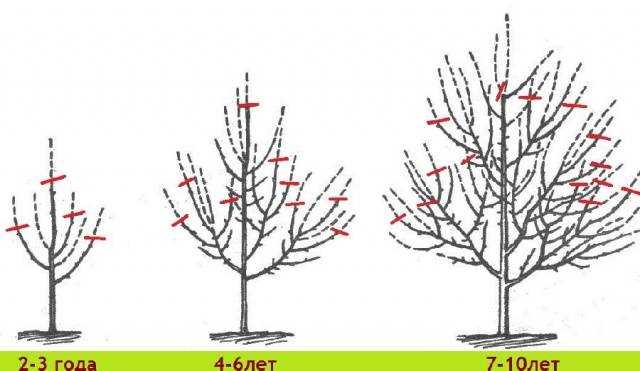

Having the right tools for spring pruning is essential to ensure clean cuts and minimize damage to the tree. Here are some essential tools you will need:
- Pruning shears: These are used for cutting small branches and twigs. Look for high-quality shears with sharp blades for clean cuts.
- Loppers: Loppers are ideal for cutting larger branches that are too thick for pruning shears. Choose loppers with long handles for added reach and leverage.
- Pruning saw: A pruning saw is useful for cutting thick branches that cannot be easily cut with pruning shears or loppers. Ensure that the pruning saw has a sharp blade for efficient cutting.
- Gloves: Wear protective gloves to protect your hands from scratches and injuries while pruning. Choose gloves that provide a good grip and allow for dexterity.
- Disinfectant: It is important to disinfect your pruning tools between cuts to prevent the spread of diseases. Use a disinfectant spray or solution to clean the blades after each cut.
Having these tools ready before you start pruning will make the process easier and more effective.
Tips for Abundant Fruit Yield
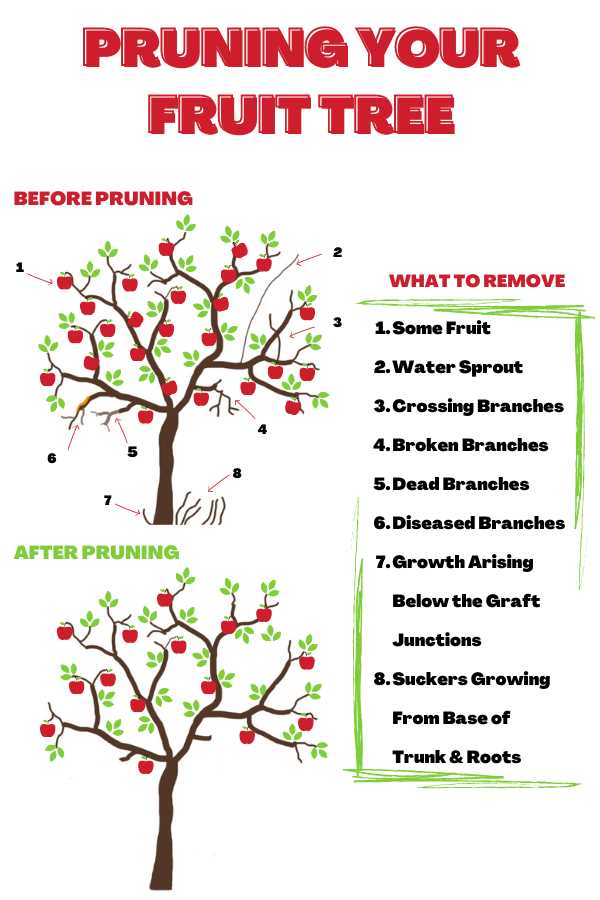

Pruning your fruit trees in the spring is an essential task for ensuring a bountiful harvest. Here are some tips to help you maximize your fruit yield:
1. Remove Dead and Diseased Wood
Start by identifying any dead or diseased wood on your fruit tree. Dead branches will appear dry, brittle, and lifeless, while diseased wood may have discolored or distorted growth. Pruning these branches will prevent the spread of disease and allow the tree to focus its energy on producing healthy, abundant fruit.
2. Thin Out Overcrowded Branches
Overcrowded branches can limit airflow and sunlight penetration, leading to a decrease in fruit production. Use pruning shears to selectively remove some of the smaller, weaker branches, creating space for the remaining branches to grow and develop. This process, known as thinning, will ensure that the tree’s energy is directed towards producing larger, higher-quality fruit.
3. Shape the Crown
To promote optimum fruit yield, it’s important to shape the crown of your fruit tree. This involves pruning to create an open and balanced structure with well-spaced branches. Aim for a vase-like shape, with a clear central leader and outward-facing side branches. This will allow for better light penetration and airflow, improving overall fruit quality.
4. Prune for Size Control
If you have limited space or want to keep your fruit tree at a manageable size, pruning can help control its growth. By selectively removing branches or shortening them, you can maintain the desired height and shape. Just be careful not to remove too much, as this can negatively impact fruit production.
- Regular pruning is essential for maintaining healthy fruit trees and maximizing fruit yield.
- Always use clean and sharp pruning tools to minimize the risk of disease transmission.
- Prune during the dormant season or early spring before new growth begins.
- Consult a local gardening expert or reference a reliable pruning guide for specific instructions on pruning different types of fruit trees.
By following these tips, you can ensure your fruit trees are in prime condition for a bountiful harvest. Happy pruning!
Question-answer:
When is the best time to prune fruit trees in the spring?
The best time to prune fruit trees in the spring is when they are still dormant but right before the buds begin to swell.
What are the benefits of spring pruning?
Spring pruning helps to shape the tree, remove diseased or dead wood, improve air circulation, and promote abundant fruit yield.
How should I shape the crown of my fruit trees?
The crown of the fruit tree should be shaped in an open, vase-like form, with a central leader and well-distributed lateral branches.
What tools do I need for spring pruning?
Some of the tools you may need for spring pruning include pruning shears, loppers, pruning saw, and a ladder if necessary.
What is the purpose of thinning out branches during spring pruning?
Thinning out branches during spring pruning helps to reduce overcrowding, increase air circulation, and allow sunlight to reach all parts of the tree, which promotes healthy fruit development.
Should I prune all fruit trees in the same way?
No, different fruit trees may require different pruning techniques. It is important to research and understand the specific pruning needs of each type of fruit tree before pruning.
Can I prune fruit trees during any time of the year?
While some light pruning can be done throughout the year, it is generally recommended to prune fruit trees in the dormant season or early spring before buds start to break.







